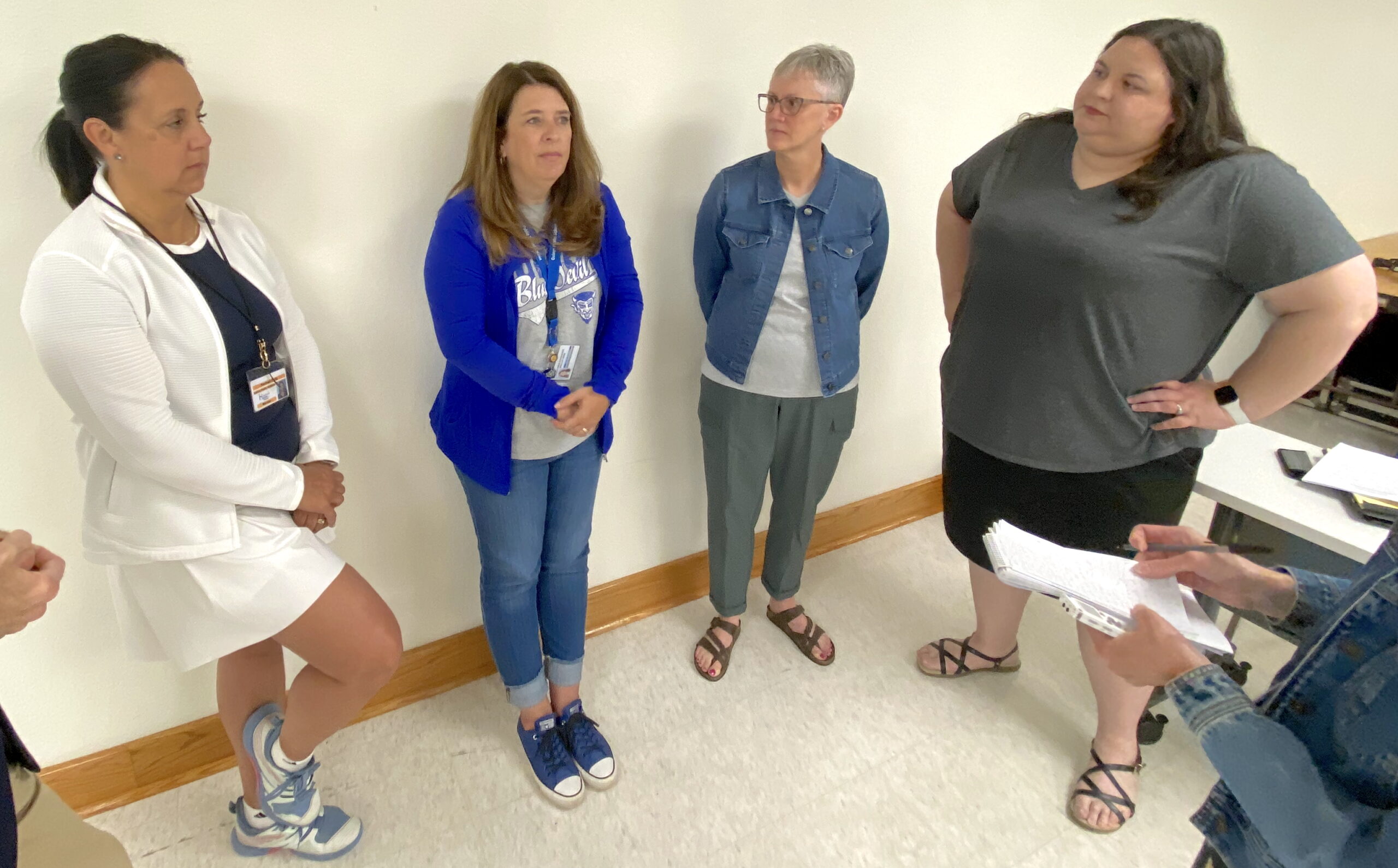School Board, teachers’ union agree on two-year contract; Arns warns of deficit spending by 2028

QUINCY — The Quincy School Board on Friday voted to approve a two-year contract Quincy Federation of Teachers and Educational Support Personnel No. 809 from July 1, 2025, to June 30, 2027.
Board members voted 6-0, with LaTonya Brock absent. The teachers’ union voted electronically earlier this week to ratify the contract. The contract follows a three-year deal that is set to expire on June 30.
A joint statement from Shelley Arns, president of the Quincy School Board, and Stacie Niffen, executive president of the teachers’ union, was issued to media members at Friday morning’s meeting.
They said key areas of focus during negotiations included increasing starting pay for non-certified positions to remain competitive with similar roles in the local and regional markets. They emphasized the importance of honoring longevity to help retain staff members across all classifications.
“The overall focus was to try to be competitive with starting salary (and) raise existing employees so that they were not surpassed by any new hires,” Arns said after Friday morning’s meeting. “I think the union was very interested in being able to do something for longevity and reward those who have given their years of service to QPS, which we absolutely wanted to do as well. I think through the raises we were able to come up with and the salary structure, we found room to be able to do that.”
“We had some very similar common goals,” Niffen said.
The Quincy Federation has approximately 580 members. It represents teachers, paraprofessionals, custodians, food service employees, transportation employees, secretaries and security.
The new deal includes a 3 percent contribution to the Teacher Retirement System in the first year of the two-year contract and a 3 percent salary increase in the second year of the contract for licensed staff and certified teachers.
“While most school districts in Illinois cover the full 9 percent of the employee portion of TRS as an employee benefit, QPS (Quincy Public Schools) currently contributes 1 percent,” the joint statement read. “Beginning with the 2025-26 school year, this contribution will be 4 percent annually.”
Both sides said the implementation of interest-based bargaining made negotiations much more efficient. Pettit, Arns and Niffen all participated in a fall training session before negotiations began in January.
“It’s not an adversarial relationship (between the School Board and teachers union). It’s a collaborative relationship,” Niffen said. “I think in those situations, everybody wins.”
“It’s really looking at what issues are impacting our employees in our district, and how can we work together to resolve those,” Arns said. “It’s brainstorming. Lots of dialogue, lots of brainstorming. What is possible? Would this work? It’s just really hashing those ideas out.
“Early on, we met individually with each subgroup’s leadership to hear what were their issues and what were the big points they wanted us to hear. Some of them were in our everyday practices. Some of them were actually contractual things that we needed to address. That was really valuable for us, being able to hear their concerns. I so appreciate their trust and transparency and honesty with us and trusting us with that, because I know that sometimes is not always a comfortable place to be to air grievances and concerns.”
Arns said she believes the School Board is committed to continuing interest-based discussions in the future.
“We had moments,” she said with a grin. “We had hard conversations, and we had moments where we probably just said, ‘OK, somebody give in. Somebody come up with an idea that’s going to make both sides work.’ Interest-based bargaining is simply that you bring the interests of both parties together as issues that are then discussed among the group openly.”
Todd Pettit was at the table for contract negotiations in 2022, but he called his first contract negotiation as superintendent “interesting.”
“I’ve been on both sides of the fence,” he said. “I was a union leader, and now I’m on the administrative side, but never (for) a wall-to-wall contract where you’re representing multiple subgroups. It was a learning curve, for sure.”
Arns said a two-year contract was agreed upon because of the school district’s financial position.
“We want to be mindful of that,” she said. “I think things eventually boil down to the finances.”
Arns then explained that the school district is preparing for deficit spending by 2028. Federal Elementary and Secondary School Emergency Relief (ESSER) funds eased financial concerns in recent years but have expired, with the last payment in September 2024.
“2028 is looking like that’s the point where bad news …” Arns said, not finishing her sentence.
Voters rejected in March 20 by a 5,710 to 4,450 margin a 53-cent increase in the education fund that was expected to generate an estimated $5.3 million each year to cover costs of unfunded state mandates for a $40,000 minimum teacher salary (which was implemented in 2023) and a $15 per hour minimum wage by 2025 and address staff turnover.
The education fund cannot exceed $1.84 in assessed value without voter approval. The state set the education fund rate in 1988, and Quincy voters have never approved an increase in the fund.
Fifty-six school districts in Illinois, including Quincy, are listed as members of the Large Unit District Association. LUDA districts educate students in preK through grade 12 and have enrollments of at least 3,500 students.
Ryan Whicker, chief of business operations for Quincy Public Schools, says Quincy is the only LUDA district in the state that has not approved an increase in its education fund. Alton has the 55th-lowest education fund rate among LUDA schools at $2.15.
“Things haven’t changed. Our education rate has not changed,” Arns said. “We are still trying to pay new mandates on salaries, new unfunded mandates as far as curriculum and other things that we are required to provide with the same amount of a tax rate.
“We’ll see where we are as a district and as a community. If the community feels like it’s possible to continue funding our schools on 37-year-old tax rates, then that’s what we’re going to have to do. Education will look very different.”
Miss Clipping Out Stories to Save for Later?
Click the Purchase Story button below to order a print of this story. We will print it for you on matte photo paper to keep forever.

